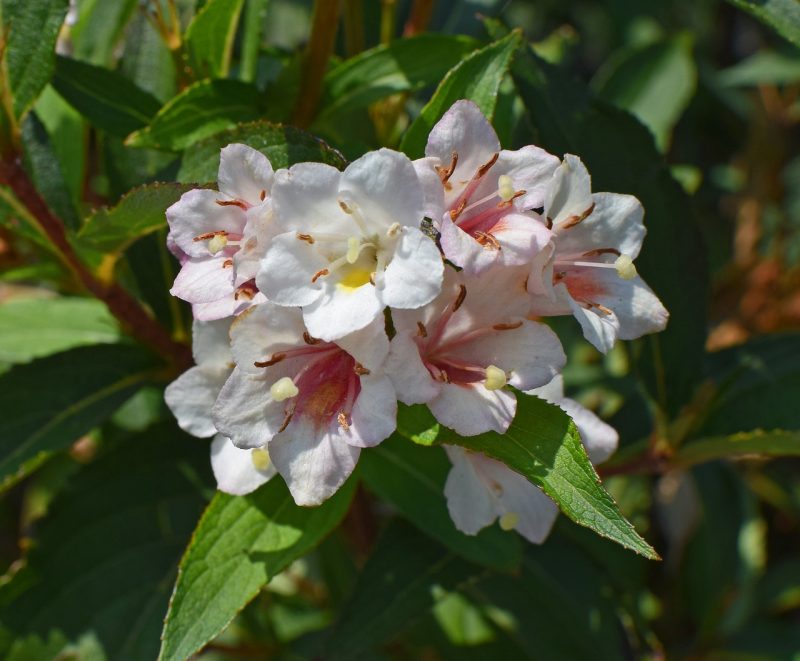On this page, you’ll findl evergreen plants that not only withstand the Texas climate but also bring unique characteristics and beauty to your front yard.
Texas Sage (Leucophyllum frutescens)
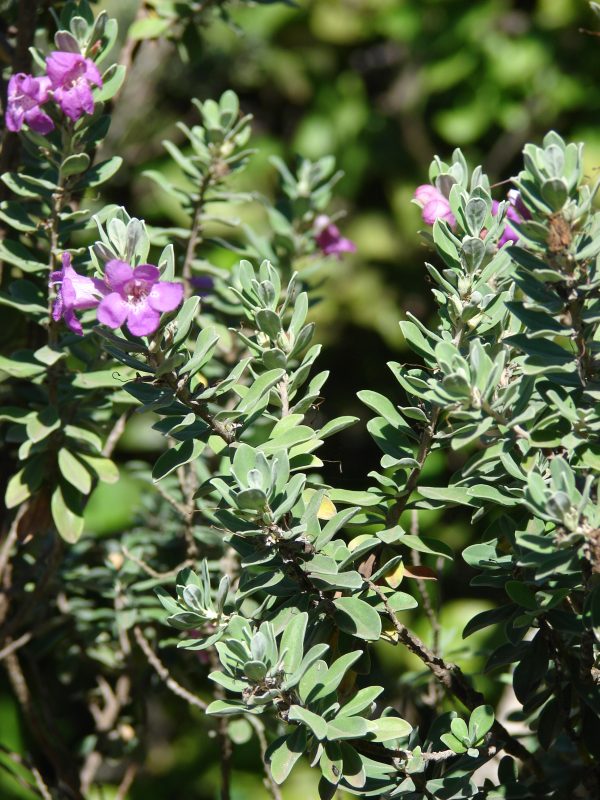
Texas Sage, often celebrated for its stunning silvery foliage and vibrant purple blooms, is a staple in many Texan landscapes. This shrub is particularly well-suited for front yards due to its resilience to drought and heat, making it an ideal choice for regions where summer temperatures soar. Texas Sage has a low-maintenance nature, requiring minimal water once established, which makes it an environmentally friendly choice for water-conscious gardeners.
Beyond its adaptability, Texas Sage also plays a vital role in supporting the local ecosystem. The shrub attracts a plethora of pollinators, including bees and butterflies, during its blooming season, which typically occurs from late spring to early fall. Its dense growth habit provides shelter for birds and other wildlife, promoting biodiversity in your front yard. Planting Texas Sage can create a spectacular focal point while contributing to the ecological health of your garden.
Agarita (Mahonia trifoliolata)
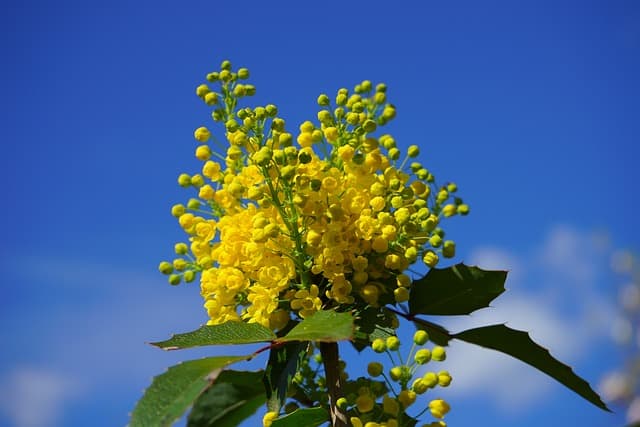
Agarita is a unique evergreen that thrives in the wild landscapes of Texas Hill Country and beyond. Its distinctive holly-like leaves have spiny edges that give it a rugged yet appealing aesthetic. This plant’s bright yellow flowers burst onto the scene in early spring, attracting bees and other beneficial insects that contribute to the overall health of your garden.
Aside from its beauty, Agarita is well-known for its hardiness; it tolerates poor soils and drought conditions with ease. This characteristic makes it a perfect selection for gardeners who prefer low-maintenance plants that require little irrigation over the long term. As for wildlife, Agarita produces small, dark blue berries in the summer, providing a food source for birds and small mammals. Its thorny foliage also serves as a protective habitat, creating a safe space for birds to nest.
For front yards, Agarita can be utilized as a low hedge or accent plant, effectively demarcating boundaries while maintaining an air of rustic charm. Its adaptability to a range of lighting conditions—from full sun to partial shade—further adds to its appeal, allowing it to thrive in various spots throughout your landscape.
Yaupon Holly (Ilex vomitoria)
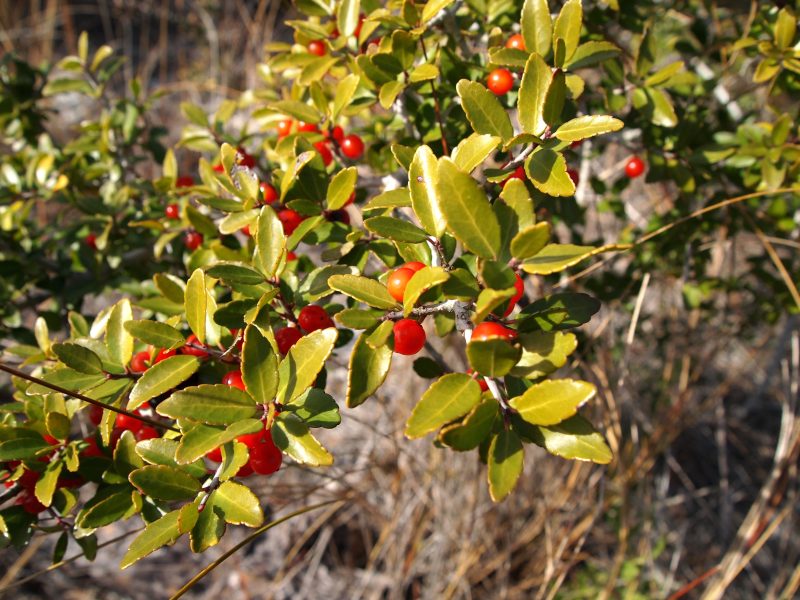
Yaupon Holly stands out as one of the most versatile evergreens in Texas, making it an excellent choice for front yards. With its glossy, dark green leaves and red berries in winter, it offers year-round visual interest. This shrub is often praised for its ability to tolerate a wide range of soil types, from sandy to clay, as long as it receives adequate drainage.
A notable feature of Yaupon Holly is its adaptability to pruning. This flexibility allows gardeners to shape the shrub according to their aesthetic preferences, whether as a formal hedge, a specimen tree, or a natural privacy screen. Plus, it’s a great choice for those who are looking for a native plant that supports local wildlife. The berries, while not edible for humans, are a favorite snack for birds, who will flock to your garden in search of this seasonal delicacy.
Beyond its ecological benefits, Yaupon Holly is often recognized for its role in traditional practices among Native American tribes, where its leaves were used to create a caffeinated tea, showcasing a deep-rooted cultural significance. By incorporating Yaupon Holly into your front yard, you’re choosing a plant that not only beautifies the landscape but also connects to the rich history of the region.
Wax Myrtle (Morella cerifera)

Wax Myrtle is a remarkable evergreen that thrives in various Texas landscapes, from coastal regions to more arid areas. Known for its aromatic foliage, this versatile shrub can reach heights of up to 20 feet, making it an excellent candidate for screens, hedges, or focal points in your front yard. The leaves emit a fragrant scent that can deter pests, serving as a natural insect repellent, while also attracting beneficial insects like bees and butterflies.
What makes Wax Myrtle truly special is its adaptability to diverse soil conditions, including sandy, loamy, and even heavy clay soils. Its drought tolerance after establishment means that it can flourish in areas prone to dry conditions, aligning perfectly with the needs of Texas gardeners. In terms of aesthetics, Wax Myrtle is adorned with small, waxy berries that appear in late summer, providing nourishment for birds and adding visual interest to your landscape.
Incorporating Wax Myrtle into your front yard landscape not only offers striking greenery but also establishes a habitat that fosters local wildlife, promoting a balanced ecosystem right outside your door.
Texas Mountain Laurel (Sophora secundiflora)
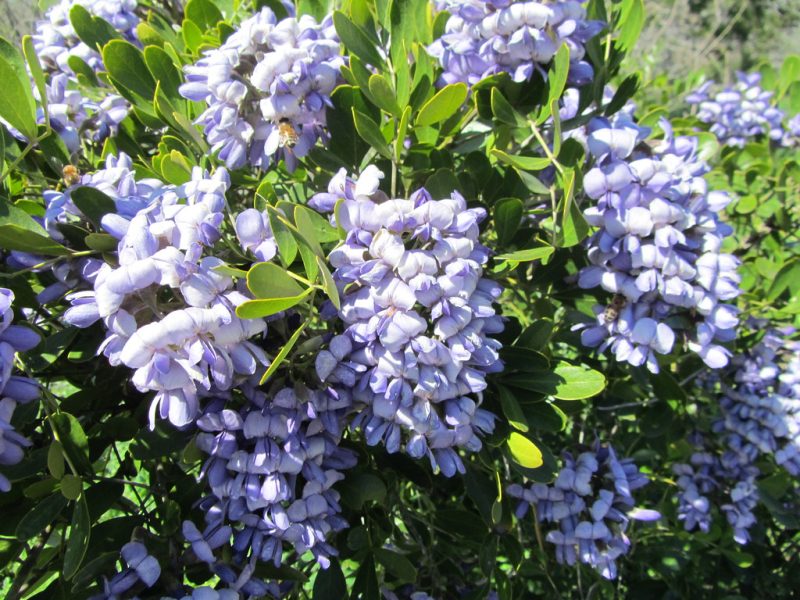
Texas Mountain Laurel is a stunning evergreen that captures the essence of Texan beauty, boasting dense, dark green foliage and clusters of fragrant purple blooms in spring. This small to medium-sized tree or large shrub can reach heights of up to 30 feet and is typically utilized in front yards for accentuating entryways or as a centerpiece. Its vibrant flowers, reminiscent of grape soda, release an intoxicating fragrance that can fill your garden with delightful scents during blooming season.
More than just a pretty face, the Texas Mountain Laurel is incredibly resilient. It thrives in the alkaline soils commonly found in Texas and showcases excellent drought resistance once established. This species also offers a significant ecological benefit: the flowers attract numerous pollinators, including bees and butterflies, critical for maintaining healthy garden ecosystems.
Planting Texas Mountain Laurel in your front yard is a statement of enduring beauty and functionality. Its distinctive look can elevate the design of your landscape while simultaneously supporting local wildlife, thus creating a sanctuary for both residents and nature.
Evergreen Sumac (Rhus virens)
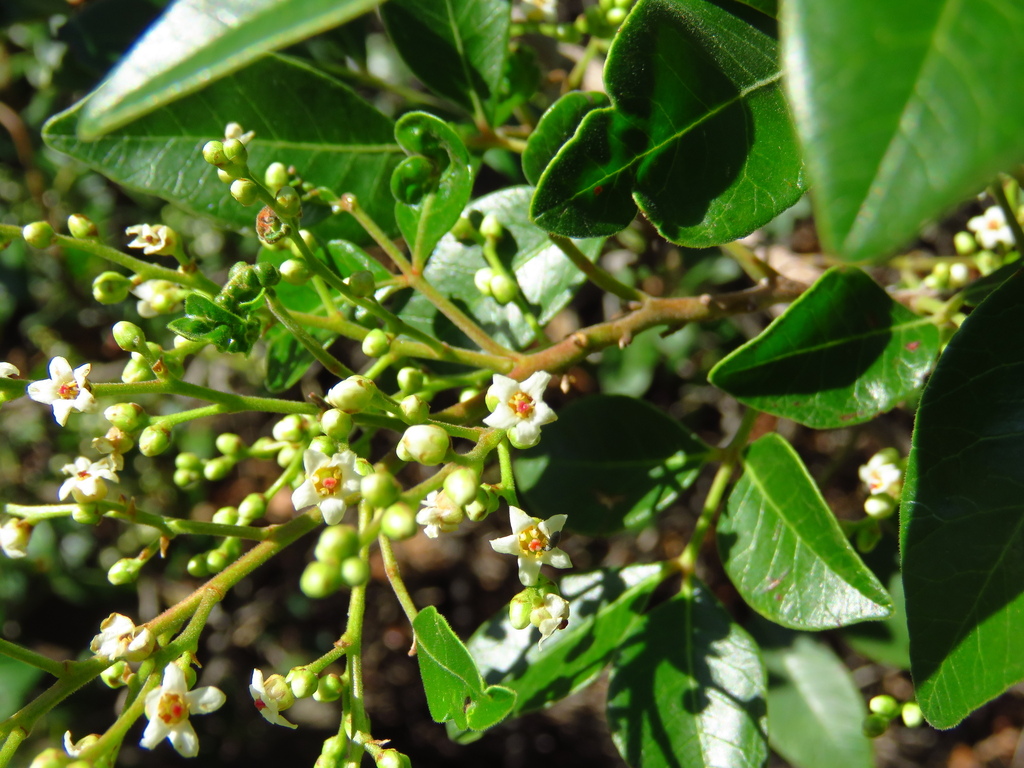
Evergreen Sumac is an excellent choice for those looking to add a touch of Texas flora to their front yard. This hardy shrub typically grows between 5 to 10 feet tall and is revered for its lush, glossy leaves that provide a vibrant backdrop throughout the year. The Evergreen Sumac’s rich, green foliage is accentuated in the fall when it transitions to stunning shades of red and orange, offering a captivating seasonal display.
This adaptable evergreen thrives in a variety of conditions, from rocky slopes to sandy soils, and is well-suited for the heat and periodic drought that Texas can experience. Its resilience allows it to anchor slopes and control erosion, making it a practical choice for more challenging landscapes. The small clusters of cream-colored flowers appear in late spring, followed by bright red berries in the summer, attracting birds and other wildlife who rely on them for sustenance.
Beyond its practical benefits, the Evergreen Sumac can also be pruned into a more formal shape to create a more manicured look in your front yard. Its ability to create a natural privacy screen with its dense growth makes it an ideal plant for garden boundaries, providing both seclusion and aesthetic appeal.
Autumn Sage (Salvia greggii)
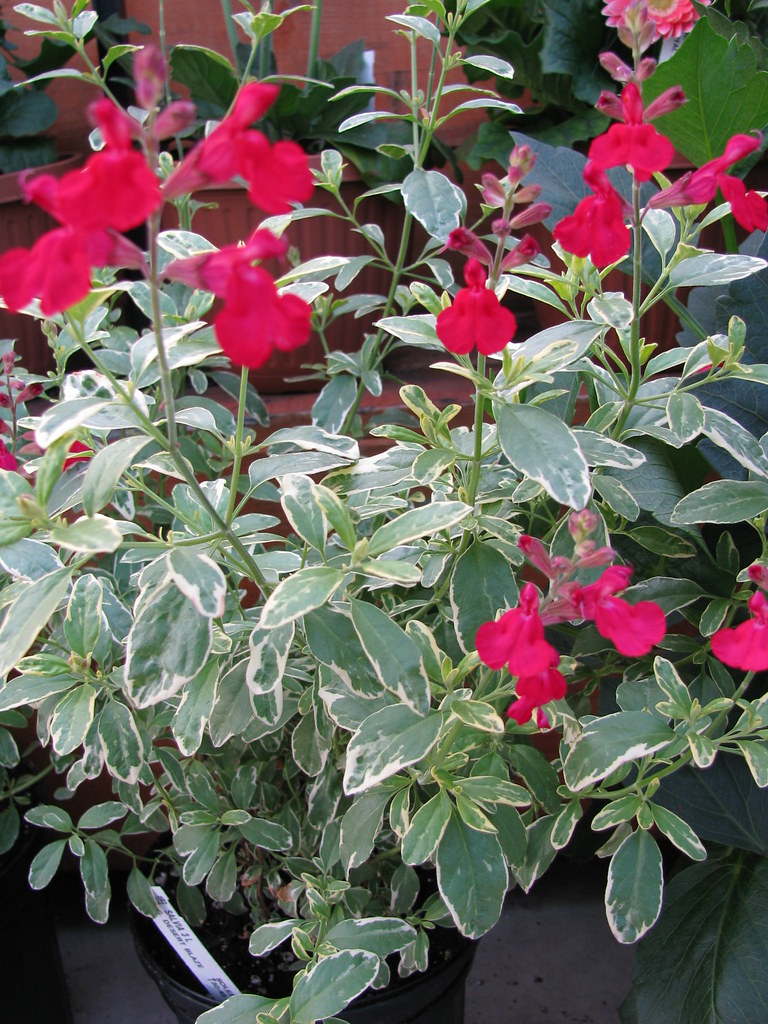
Autumn Sage is renowned for its vibrant blooms and adaptability to the Texan climate. This semi-evergreen shrub showcases a profusion of colorful flowers in shades of red, pink, purple, and white, which appear from spring through fall, offering a long-lasting display of color. As a crucial nectar source for hummingbirds and butterflies, Autumn Sage plays a vital role in encouraging pollinator visits to your garden.
This herbaceous perennial flourishes in well-drained soils and is notably drought-tolerant, making it ideal for xeriscaping and water-wise gardening. Its small stature, typically reaching heights of 1 to 3 feet, allows for versatile planting—use it as a low border along pathways, in foundation plantings, or as a colorful accent in mixed shrub beds. Additionally, its fragrant foliage can deter deer and other browsing animals, making it a practical choice for gardens where wildlife may be a concern.
By incorporating Autumn Sage into your front yard, you not only introduce stunning bursts of color but also support a thriving pollinator community, enhancing the ecological resilience of your landscape while eliminating the need for chemical pesticides.
Glossy Abelia
Glossy Abelia is a versatile evergreen shrub that combines elegant aesthetics with remarkably low maintenance. With its lush, shiny leaves and delicate, fragrant white or pink tubular flowers, this shrub offers year-round interest. Glossy Abelia’s growth habit typically ranges from 3 to 5 feet in height, making it suitable for use as a hedge or foundation plant, as well as in mixed borders.
One of its standout features is its adaptability: Glossy Abelia thrives in various soil types (including poor soils) and can withstand both full sun and partial shade. This hardiness translates into a plant that requires minimal care, tolerating drought conditions once established. Furthermore, its flowers not only beautify your landscape but also attract beneficial insects such as bees and butterflies, fostering biodiversity in your yard.
For those looking to create a seamless transition between indoor and outdoor space, Glossy Abelia’s charming aesthetic makes it perfect for containers or patio arrangements. By choosing this evergreen for your front yard, you are selecting a resilient, adaptable plant that beautifies and enhances the ecological health of your landscape.
Japanese Boxwood (Buxus microphylla var. japonica)
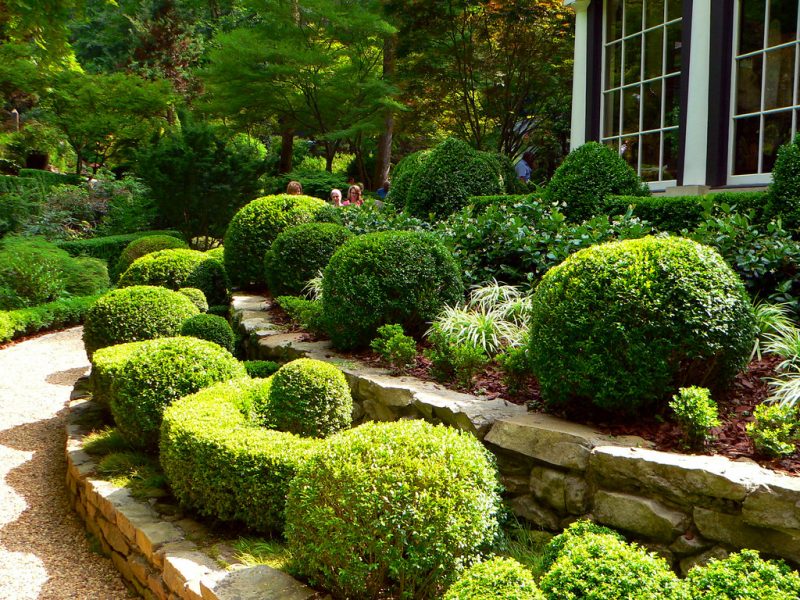
Japanese Boxwood is a classic evergreen shrub known for its refined look and adaptability, making it an ideal choice for front yards. This shrub features dense, glossy leaves that maintain a rich green color year-round, serving as an elegant backdrop for other plants. With a height of 2 to 4 feet and a shrub-like growth habit, Japanese Boxwood can be easily shaped and pruned into formal hedges or topiaries, adding structure and sophistication to your landscaping design.
One of the significant advantages of Japanese Boxwood is its excellent tolerance to various growing conditions, including drought once established. It thrives in both full sun and partial shade, which allows for great flexibility in placement within your landscape. These plants are also relatively resistant to pests and diseases, ensuring a visually appealing addition without excessive upkeep.
Incorporating Japanese Boxwood into your front yard creates a classic look while providing a lush, green foundation that enhances the overall design. Its ability to pair beautifully with flowering plants, ornamental grasses, and other evergreen species allows you to craft a dynamic and engaging landscape.
Oleander (Nerium oleander)

Oleander is a striking evergreen shrub that brings a tropical flair to Texas gardens. It features long, lance-shaped leaves that are dark green and glossy, providing an attractive backdrop for its profuse flowers that bloom from spring through fall. Oleander offers blooms in various colors, including white, pink, and red, creating a vibrant display that brightens any landscape.
This hardy shrub is particularly well-suited for hot, dry climates, making it an excellent choice for Texas gardeners. Oleander thrives in poor, well-drained soils and is remarkably drought-tolerant once established, leading to low-water requirements that fit well into Texas’s water-conscious gardening practices. However, it’s essential to note that Oleander is toxic if ingested, so caution is advised if children or pets are present.
Oleander can serve multiple functions in your front yard. Its dense foliage makes it an effective privacy screen or hedge, while its stunning flowers attract pollinators like hummingbirds and butterflies. By adding Oleander to your landscape, you can create a colorful and resilient garden that flourishes in the heat of the Texas sun.
Red Yucca (Hesperaloe parviflora)
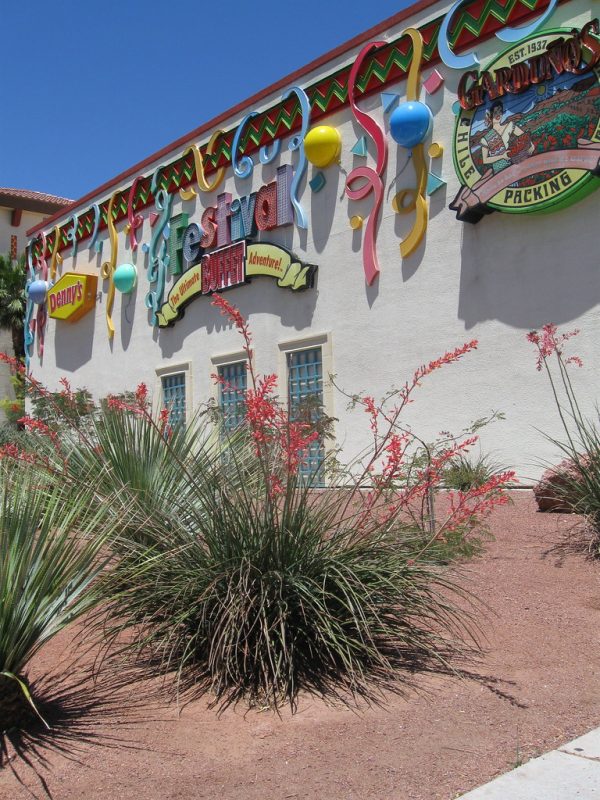
Red Yucca is an enchanting evergreen that adds a unique flair to the Texan front yard. With its slender, arching leaves forming a rosette, this plant provides a striking architectural element to any garden. Reaching about 2 to 3 feet in height and spreading up to 4 feet wide, Red Yucca serves as a beautiful ground cover or accent plant.
What truly sets Red Yucca apart are its tall flower spikes that can soar up to 5 feet high, producing tubular, coral-red flowers that entice hummingbirds and butterflies. This plant blooms during the summer months, adding a dramatic touch to your landscape while playing a significant role in attracting pollinators. Furthermore, its drought-tolerant nature and ability to thrive in poor soils make it an ideal choice for low-maintenance gardens.
Planting Red Yucca in your front yard not only provides a beautiful visual focal point but also supports local wildlife. Its unique appearance allows it to pair wonderfully with other drought-tolerant plants, such as agaves or succulents, creating a Southwestern-inspired garden design.
Arborvitae (Thuja spp.)
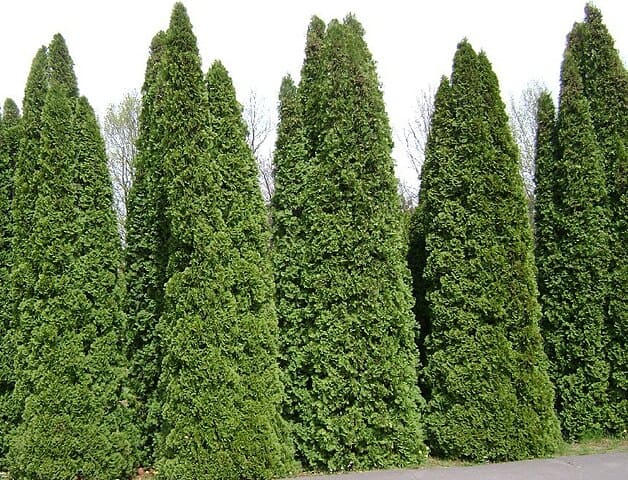
Arborvitae is one of the quintessential evergreens for Texas landscapes, particularly valued for its tall, columnar form. These shrubs and small trees can be found in various species, including American Arborvitae (Thuja occidentalis) and Eastern Arborvitae (Thuja plicata). They provide an excellent option for privacy screens and windbreaks due to their dense foliage, which can grow upwards of 20 feet tall, depending on the variety selected.
The versatility of Arborvitae extends to its suitability for different soil types, including clay and sandy soils, as well as its tolerance for drought once established. This evergreen thrives in sun to partial shade, allowing flexibility in garden placement. A particularly notable advantage is its minimal upkeep; regular pruning is rarely necessary, and they have resistance to many common pests, making them a worry-free choice for gardeners.
Incorporating Arborvitae into your front yard not only enhances your landscape’s visual depth with its upward growth and vibrant green foliage but also provides a functional barrier against noise and weather. Its vertical structure adds interest to garden design, particularly when combined with flowering plants or other low-growing shrubs, creating a layered and dynamic appearance.
Junipers (Juniperus spp.)

Junipers are a diverse group of evergreen plants that include low groundcovers, sprawling shrubs, and upright trees, making them suitable for a wide range of applications in Texan landscapes. Common varieties such as Eastern Red Cedar (Juniperus virginiana) and Texas Sage (Juniperus spp.) are well-adapted to the regional climate, showcasing their resilience to heat and drought.
The foliage of Junipers varies from soft, feathery needles to dense, scale-like leaves, offering a variety of textures that can enrich any front yard. Additionally, many Juniper varieties produce attractive berry-like cones that add visual interest and provide food for birds and other wildlife throughout the winter months. Their adaptability to poor soils and ability to thrive in low-water conditions make them a perfect choice for low-maintenance gardens.
Junipers can be used in various ways: plant them as low borders, use upright varieties as specimens at entryways, or create a naturalistic look in rock gardens or xeriscapes. By choosing Junipers for your front yard, you’re not only selecting plants with incredible versatility and beauty but also contributing to an eco-friendly garden that supports local wildlife.
American Holly (Ilex opaca)
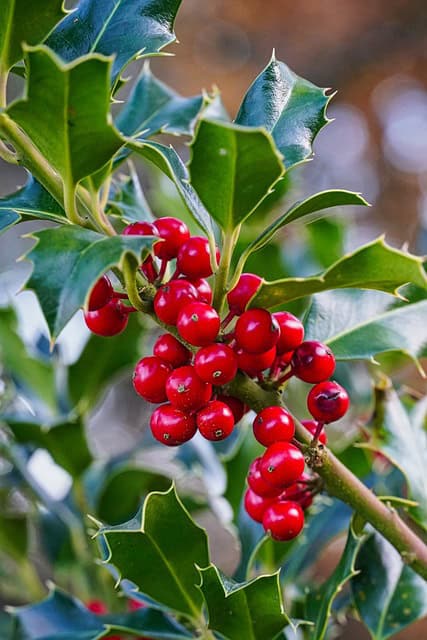
American Holly is a classic evergreen tree that provides native charm and seasonal interest to Texas front yards. Known for its glossy, spiky leaves and bright red berries, this plant becomes a focal point, especially in winter when the berries attract birds and other wildlife. American Holly typically grows between 15 to 30 feet tall, with a pyramidal shape that adds vertical interest to your landscape.
One of the notable benefits of American Holly is its adaptability to various soil types, including clay and acidic soils, allowing it to flourish throughout Texas. It prefers partial shade to full sun and is relatively drought-tolerant once established, making it a sustainable choice for a low-maintenance landscape. Additionally, its dense foliage provides excellent privacy and shelter, adding another layer of functionality to your front yard.
Incorporating American Holly into your garden can bring beauty throughout the year. The bright red berries are not only striking against the deep green leaves but also provide excellent winter interest when other plants have lost their foliage. Moreover, their beautiful blooms in spring are beneficial not only for garden aesthetics but also for attracting pollinators during their active season.
Cypress (Taxodium spp.)
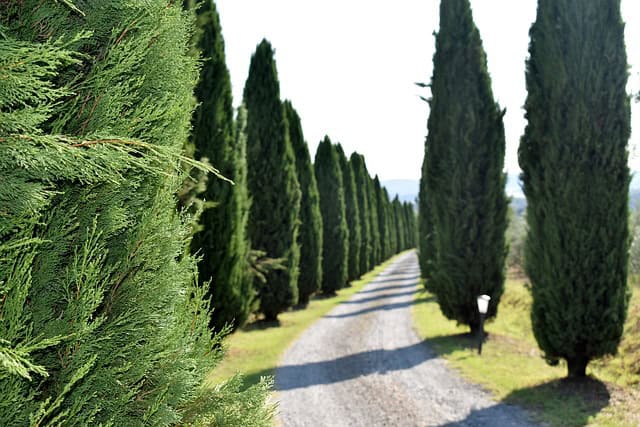
Cypress trees are iconic for their stately form and graceful appearance, making them a favored choice for Texan landscapes. The most recognized species, the Bald Cypress (Taxodium distichum), is particularly appreciated for its breathtakingly beautiful foliage that changes from vibrant green in the spring and summer to a warm golden-brown in the fall. This unique tree can grow quite tall, often reaching heights of 50 to 70 feet, creating a dramatic vertical statement in your front yard.
One of the most appealing attributes of the Bald Cypress is its ability to thrive in a variety of conditions, including both wet and dry soils. This adaptability makes it an excellent option for areas prone to flooding as well as those that may experience drought. When planted near water features, these trees develop a characteristic knobby growth at the base known as “knees,” enhancing their ornamental appeal and providing interesting texture.
Cypress trees also support local wildlife, including a variety of birds that seek shelter and nesting sites within their lush canopies. By incorporating a Cypress tree into your front yard, you introduce not only an eye-catching focal point but also a habitat that fosters biodiversity and connects your landscape with Texas’s native ecosystem.
California Laurel (Umbellularia californica)
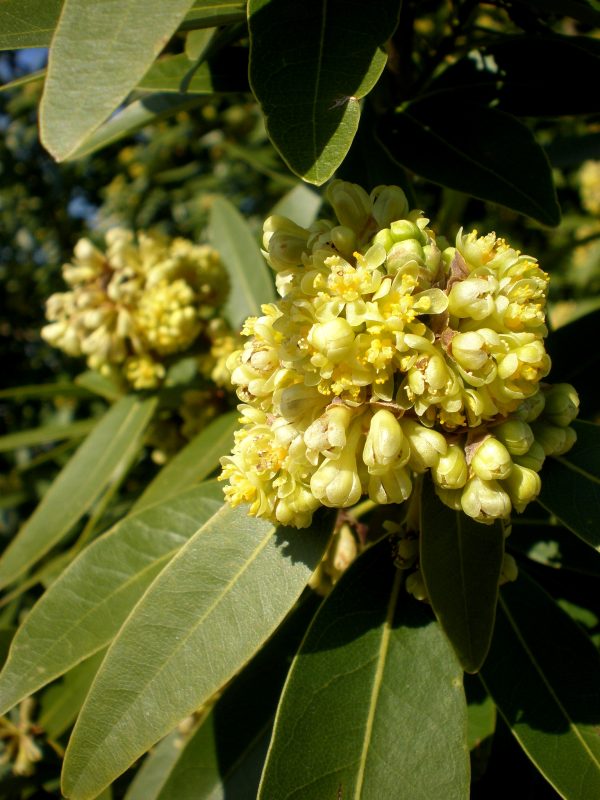
California Laurel, commonly referred to as Bay Laurel, is a lesser-known evergreen that deserves attention in the context of Texas landscapes. This tree is prized for its aromatic leaves, which are often used in culinary applications, lending a fresh and invigorating scent to gardens. While not native to Texas, California Laurel is well-adapted to the region’s climate and soils, capable of reaching heights of 30 to 60 feet, with a broad canopy providing ample shade.
The glossy, dark green leaves of California Laurel not only provide aesthetic value but also serve as a habitat for various beneficial insects and birds. This evergreen does particularly well in well-draining soils and can tolerate drought conditions once established. Its versatility allows it to be planted as a solitary specimen, in clusters for a more naturalistic look, or even as a hedge for added privacy.
Incorporating California Laurel into your front yard not only enhances its visual appeal but also adds a sensory experience with its fragrant foliage that you can enjoy throughout the year. Moreover, the tree’s longevity and resilience underscore its suitability for long-term landscaping projects, making it a great investment in your home’s curb appeal.
Longleaf Pine (Pinus palustris)
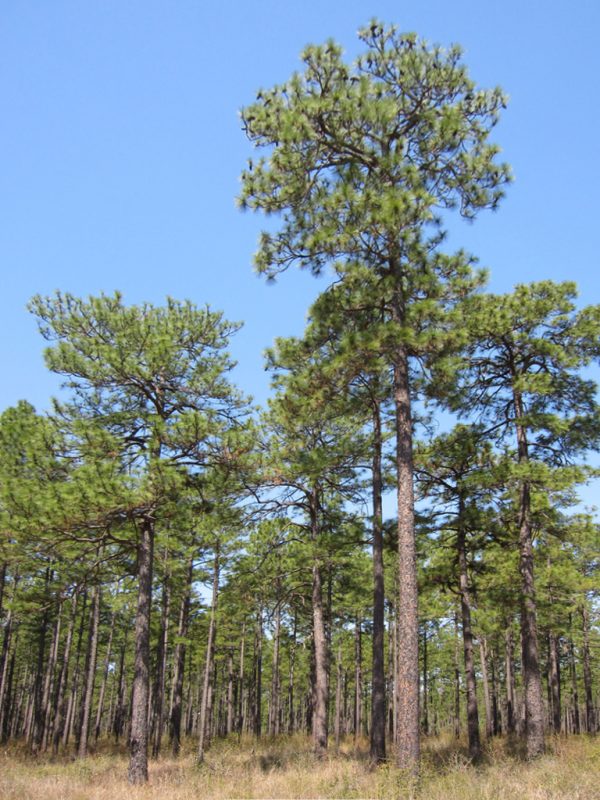
Longleaf Pine stands as a testament to the breathtaking natural beauty found in Texas forests. With its impressive height—often exceeding 60 feet—and a broad, open crown, the Longleaf Pine provides a majestic presence in any front yard setting. Native to the southeastern United States, including parts of Texas, this tree plays a vital role in maintaining biodiversity by providing habitat and food for numerous wildlife species.
One of the most remarkable features of Longleaf Pine is its adaptability to a variety of soil types, particularly sandy and well-drained soils, making it ideal for many regions in Texas. Its drought tolerance allows it to thrive even in less-than-ideal conditions, contributing to a resilient and low-maintenance landscape. The tree typically begins to produce cones after 5 to 10 years, resulting in attractive, reddish-brown features that add interest to your garden.
Additionally, Longleaf Pine is known for its stunning beauty throughout the seasons. In spring, the tree produces striking needle clusters that create a soft, lustrous appearance, while the cones provide winter interest. This evergreen is also a resilient choice against pests and diseases, ensuring that you can enjoy your landscape without the need for extensive chemical treatments.
Integrating Longleaf Pine into your front yard not only enhances its natural beauty but also fosters a sense of responsibility toward preserving Texas’s ecological heritage. By sourcing native plants and promoting biodiversity, you contribute to a sustainable environment while enjoying the majesty of this stunning evergreen.
Southern Magnolia (Magnolia grandiflora)
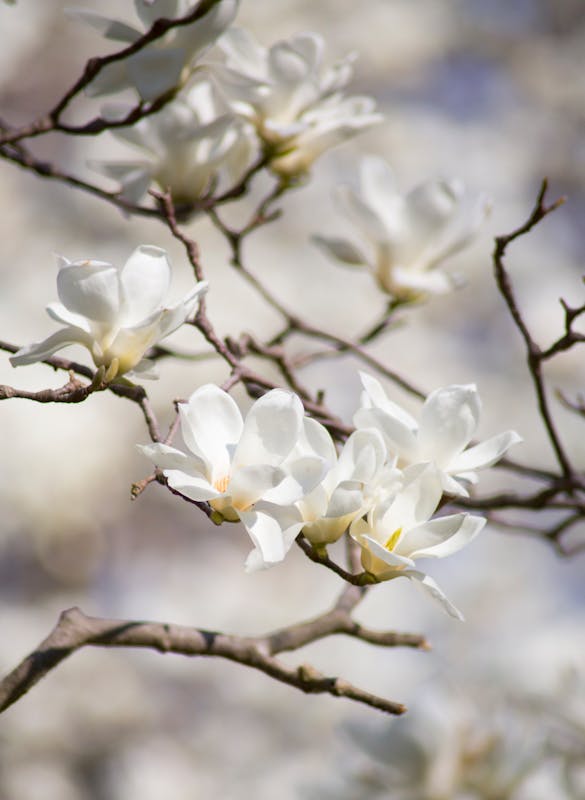
The Southern Magnolia is a quintessential tree found throughout the southern United States, celebrated for its lush, dark green foliage and stunning, creamy white flowers. These majestic trees can grow between 60 to 80 feet tall, with a broad canopy that provides remarkable shade and grandeur. The fragrant blooms, which can be up to 12 inches wide, appear in late spring and early summer, creating a floral display that is both visually striking and aromatic.
One of the key advantages of the Southern Magnolia is its adaptability to a range of soil types, from acidic to clay soils, which makes it a resilient choice for many Texan landscapes. The tree thrives best in full sun but can also tolerate partial shade, offering flexibility in placements across your yard. Additionally, the evergreen nature of the Southern Magnolia ensures that it retains its attractive foliage year-round, making it a staple in garden designs.
Beyond aesthetics, the Southern Magnolia supports local wildlife by providing habitat and food sources for birds and other creatures. Its large leaves not only enhance your garden’s appeal but also contribute to improved air quality by filtering pollutants. Incorporating a Southern Magnolia into your front yard brings a sense of elegance and tradition, creating a beautiful centerpiece that enhances both the visual and ecological value of your landscape.
Portuguese Laurel (Prunus lusitanica)
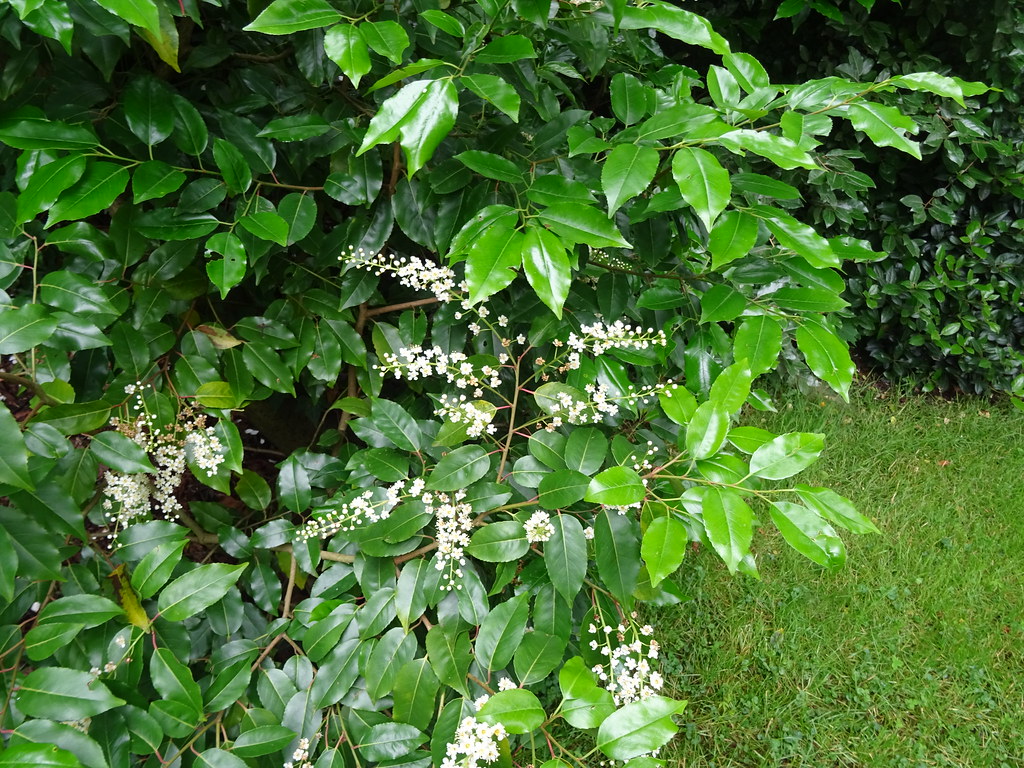
Portuguese Laurel is an evergreen shrub or small tree admired for its lush, glossy foliage and ability to provide structure and elegance in landscaping. Reaching heights of 10 to 40 feet, this versatile plant can be trained into a beautiful hedge or left to grow freely for a more naturalized look. Its deep green leaves not only provide consistent year-round color but also have a fragrant quality, enhancing the sensory experience of your garden.
Known for its resilience, Portuguese Laurel adapts well to a variety of soil types, including those that are poor or rocky, making it an ideal choice for Texan gardens. It prefers well-drained soils and performs well in full sun to partial shade, offering flexibility in where it is planted. This evergreen shrub is also remarkably pest-resistant, which reduces the need for chemical treatments and makes it a sustainable choice for eco-conscious gardeners.
During the spring, Portuguese Laurel produces small, white flowers that develop into clusters of berries. While these berries can be appealing to birds and wildlife, they also add visual interest to the plant throughout the seasons. Incorporating Portuguese Laurel can create a refined and sophisticated landscape while promoting biodiversity and supporting local fauna.
Euonymus (Euonymus japonicus)
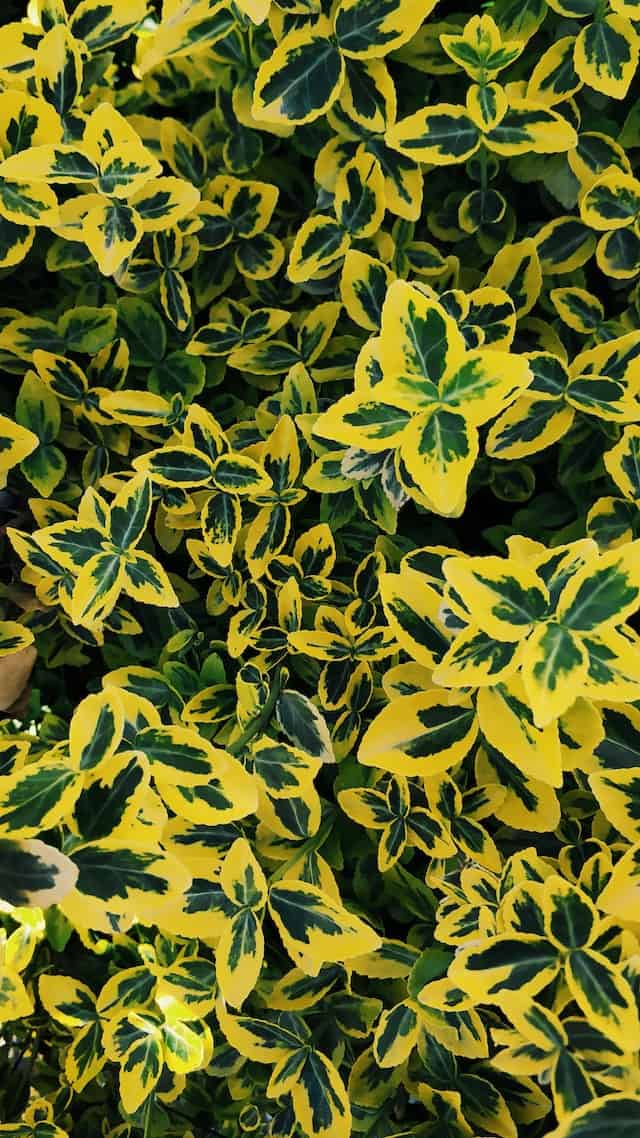
Euonymus, specifically Euonymus japonicus, is a hardy evergreen shrub that offers versatility and durability, making it an excellent choice for Texas front yards. Known for its lush, dark green leaves, this plant is often used in landscaping as a foundation plant, low hedge, or accent in garden beds. Its growth habit can range from low-growing to upright, with varieties reaching heights between 3 and 10 feet, allowing homeowners to choose the form that best fits their landscape design.
One of the standout features of Euonymus is its adaptability. It thrives in a multitude of soil types, including clay and sandy soils, and is considerably drought-tolerant once established. This resilience makes Euonymus an ideal choice for low-maintenance landscaping—an important consideration for many Texas gardeners who are managing the challenges of heat and limited water resources.
Additionally, Euonymus japonicus provides year-round interest with its glossy leaves and ability to be shaped through pruning. In some varieties, the foliage may exhibit attractive variegation, introducing a lively mix of green and cream or yellow hues that can brighten a front yard and create depth. During the cooler months, its evergreen nature ensures that your garden maintains a vibrant appearance, even when deciduous plants shed their leaves.
Incorporating Euonymus into your landscape not only adds aesthetic value but also enhances biodiversity. The dense growth can provide shelter for small birds and beneficial insects, contributing to a healthier garden ecosystem. With its striking appearance and ecological benefits, Euonymus stands out as a smart, stylish addition to any front yard in Texas.
FAQ
1. What are the benefits of planting evergreens in my front yard?
Planting evergreens in your front yard provides numerous benefits, including year-round greenery, privacy, and seasonal protection from harsh weather. They can also reduce noise pollution and serve as windbreaks, while supporting local wildlife by providing shelter and food. Additionally, evergreens assist in improving air quality by filtering pollutants and increasing oxygen levels.
2. How do I care for evergreens in Texas?
Care for evergreens in Texas typically involves ensuring proper soil drainage and appropriate watering during dry spells. Most evergreens are drought-tolerant once established, but they may need supplemental irrigation during prolonged periods of lack of rainfall. Pruning is often necessary to maintain desired shapes and encourage healthy growth. Additionally, applying a layer of mulch around the base can help retain moisture and suppress weeds.
3. Are there specific evergreens that work best for coastal areas of Texas?
Yes, certain evergreens are particularly well-suited for coastal regions due to their salt tolerance and ability to withstand windy conditions. Examples include Southern Wax Myrtle and Salt Spray Juniper, both of which can flourish in sandy, saline soils and provide robust landscapes resilient to harsh coastal environments.
4. Can evergreens be used in xeriscaping?
Absolutely! Several evergreen species are well-suited for xeriscaping and can thrive in low-water landscapes. Plants such as Junipers, Texas Sage, and Eastern Red Cedar are drought-resistant and require minimal irrigation once established, making them excellent choices for water-wise gardening efforts in Texas.
5. How do I select the right evergreen for my front yard?
When selecting the right evergreen for your front yard, consider factors such as your specific climate conditions, soil type, available space, and landscape design goals. Assess how much sunlight the area receives, whether you want a privacy screen, and the overall aesthetic you desire. Additionally, researching the growth habits and requirements of various evergreens will help you make an informed choice that aligns with your vision.
6. Will evergreens survive the winter in Texas?
Yes, most evergreens are well-adapted to handle the winters typical in Texas, which can vary by region. They are designed to retain their foliage year-round, providing vertical interest and a green backdrop, even during the colder months. However, homeowners should choose species suited for their local climate and be mindful of any unexpected freezing temperatures that may occur during winter.
By understanding the value of Euonymus and having clarity on common concerns, you can make informed choices that create a stunning, resilient landscape. The right selection of evergreens for your Texas front yard not only adds to its beauty but also enhances its functional attributes, forming a cohesive outdoor environment that can be enjoyed year-round.



